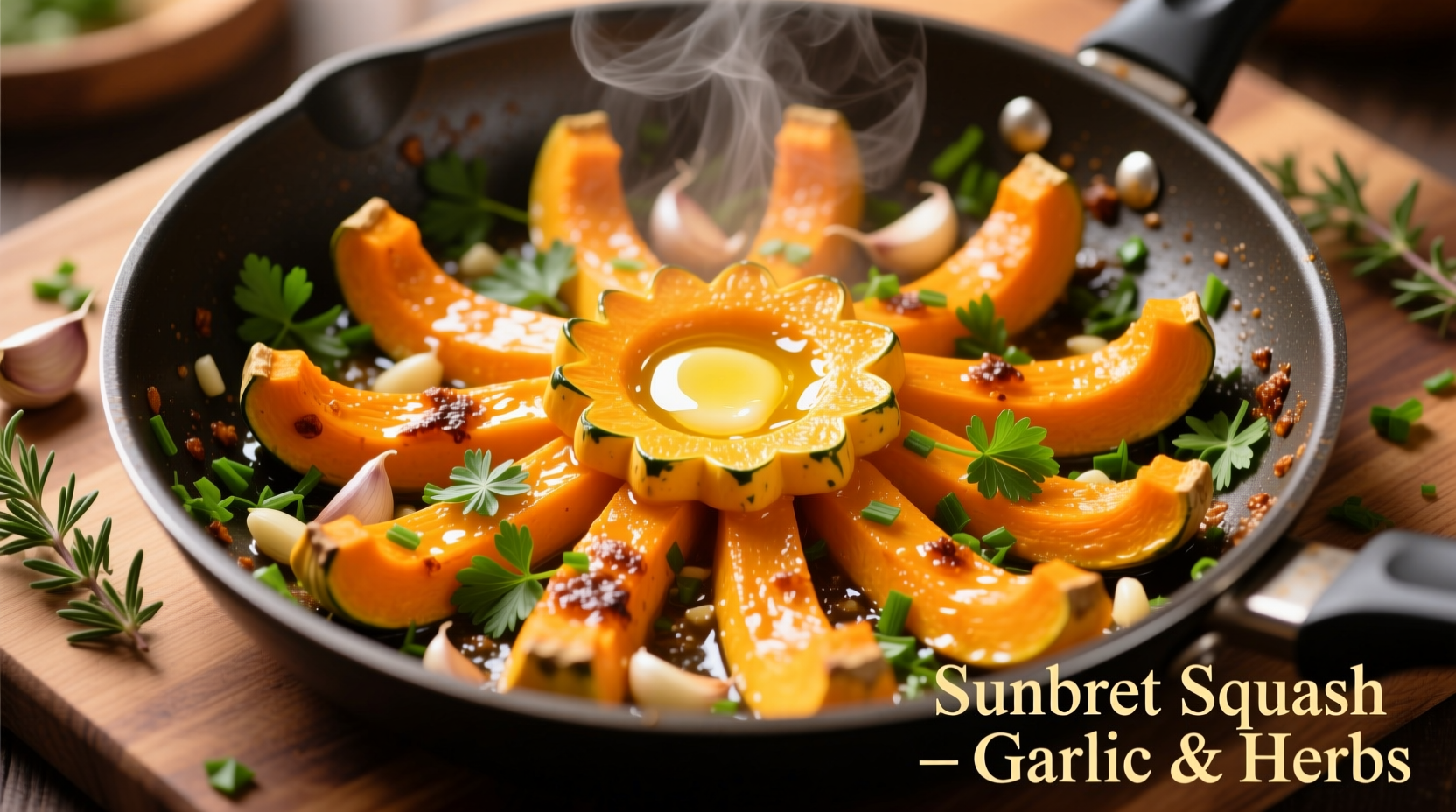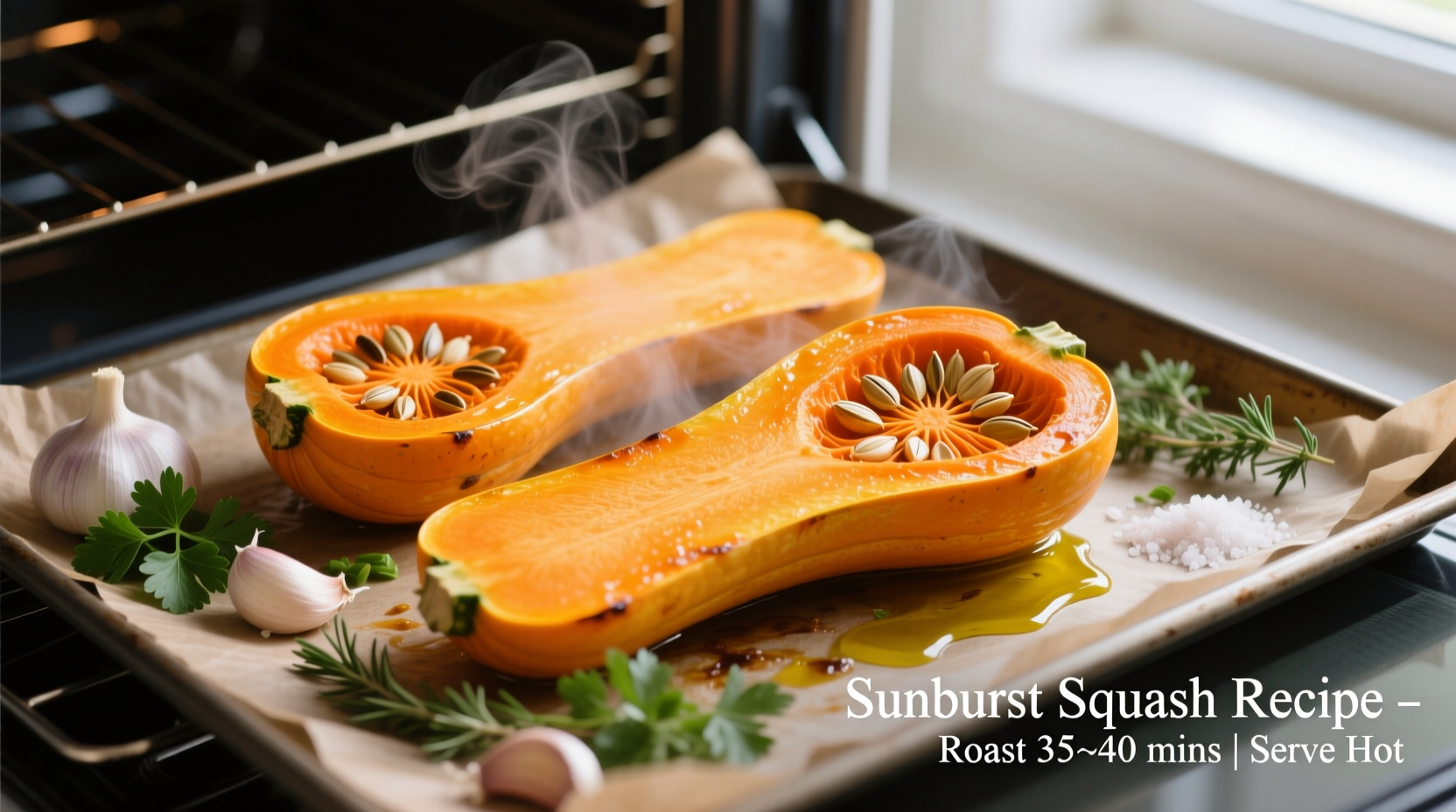Discover exactly how to cook sunburst squash to perfection with this comprehensive guide. As a distinctive yellow pattypan variety, sunburst squash offers a delicate, slightly sweet flavor that shines when prepared correctly. Whether you're harvesting from your garden or picking up this cheerful vegetable at the farmers market, you'll learn professional techniques to transform it into a stunning side dish that complements any meal.
Why Sunburst Squash Deserves a Spot on Your Menu
Sunburst squash (a type of pattypan squash) stands out with its bright yellow color and scalloped edges. Unlike some summer squashes that turn mushy easily, properly cooked sunburst maintains a tender-crisp texture that absorbs flavors beautifully. According to the USDA Agricultural Research Service, summer squashes like sunburst provide significant vitamin C and manganese while remaining low in calories—making them ideal for health-conscious cooking.
Choosing and Preparing Your Sunburst Squash
Select firm, brightly colored squash no larger than 3-4 inches in diameter. Smaller specimens offer the best texture and flavor. Research from Cornell University's Vegetable Program confirms that smaller summer squashes contain fewer seeds and less water, resulting in better cooking outcomes.
Preparation requires minimal effort:
- Rinse under cool water
- Trim stem and blossom ends
- Slice into ¼-inch rounds (or quarter larger specimens)
- No peeling necessary—the skin is completely edible
| Cooking Method | Time | Best For | Texture Result |
|---|---|---|---|
| Sautéing | 5-7 minutes | Quick weeknight meals | Tender-crisp with golden edges |
| Roasting | 15-20 minutes | Deeper flavor development | Caramelized exterior, creamy interior |
| Grilling | 4-6 minutes | Summer entertaining | Charred marks, slightly firm texture |
The Foolproof Sauté Method (5 Minutes to Perfection)
Professional chefs consistently recommend sautéing as the optimal technique for sunburst squash. This method solves the #1 problem home cooks face: watery, mushy results.
What you'll need:
- 1 lb sunburst squash, sliced
- 2 tbsp olive oil
- 2 garlic cloves, minced
- 1 tbsp fresh thyme or basil
- Salt and pepper to taste
Step-by-step process:
- Heat oil in cast-iron skillet over medium-high heat until shimmering
- Add squash in single layer (work in batches if needed)
- Cook undisturbed for 3 minutes to develop golden crust
- Flip and add garlic and herbs
- Cook 2-3 more minutes until tender-crisp
- Season with salt and finish with lemon zest
The critical timing window occurs between 4-6 minutes—this is when sunburst squash transitions from raw to perfectly cooked. Beyond 7 minutes, the vegetable releases excess water and becomes soggy. According to America's Test Kitchen research, the ideal internal temperature for perfectly cooked summer squash is 185°F (85°C).

Advanced Techniques for Flavor Enhancement
Elevate your sunburst squash with these chef-tested approaches:
Temperature Control Secrets
Maintain consistent medium-high heat throughout cooking. A temperature drop when adding squash causes steaming instead of searing. Preheat your pan properly—when water droplets dance on the surface, it's ready.
Flavor Pairing Guide
Sunburst squash complements:
- Herbs: Thyme, basil, oregano
- Cheeses: Feta, Parmesan, goat cheese
- Acids: Lemon juice, balsamic reduction
- Proteins: Grilled chicken, shrimp, prosciutto
Avoid These Common Mistakes
Even experienced cooks make these errors with sunburst squash:
- Overcrowding the pan: Creates steam instead of sear—cook in batches
- Stirring too frequently: Prevents proper caramelization—let it sit
- Adding salt too early: Draws out moisture—season in the final minute
- Using low heat: Results in boiled rather than cooked squash
Seasonal Considerations and Storage Tips
Sunburst squash peaks from June through September. When selecting, choose specimens with matte (not shiny) skin, which indicates peak ripeness. Store unwashed in a perforated bag in the refrigerator crisper drawer for up to 5 days. Avoid washing until ready to use, as moisture accelerates spoilage.
According to UC Davis Postharvest Technology Center guidelines, summer squashes maintain best quality when stored at 41-50°F (5-10°C) with 95% relative humidity—conditions most home refrigerators can approximate with proper crisper drawer settings.
Simple Recipe Variations to Try
Once you've mastered the basic technique, experiment with these delicious variations:
- Mediterranean Style: Add cherry tomatoes and Kalamata olives in the last 2 minutes
- Asian Fusion: Substitute sesame oil and finish with rice vinegar and toasted sesame seeds
- Cheesy Delight: Sprinkle with Parmesan during the final minute of cooking
- Summer Squash Medley: Combine with zucchini and yellow crookneck squash
Why This Method Works Every Time
The sauté technique succeeds because it addresses sunburst squash's high water content (approximately 95% by weight, per USDA FoodData Central). High, consistent heat evaporates surface moisture quickly while developing flavorful Maillard reactions. This approach transforms what could be a bland, watery vegetable into a vibrant, restaurant-quality side dish.
Frequently Asked Questions
Find quick answers to common sunburst squash cooking questions:
Can you eat sunburst squash skin?
Yes, the skin is completely edible and contains valuable fiber and nutrients. Unlike winter squashes, sunburst squash has thin, tender skin that softens during cooking without becoming tough or bitter.
How do you prevent sunburst squash from getting watery?
Prevent sogginess by cooking over medium-high heat in a single layer without stirring for the first 3 minutes. This allows proper searing that seals in texture. Never cover the pan while cooking, as this traps steam and creates boiling conditions.
What's the best way to store leftover cooked sunburst squash?
Store leftovers in an airtight container in the refrigerator for up to 3 days. For best results when reheating, use a skillet over medium heat rather than a microwave to maintain texture. Add a splash of olive oil to refresh the dish.
Can sunburst squash be frozen?
Yes, but only after blanching. Cook slices in boiling water for 2 minutes, then plunge into ice water. Drain thoroughly, portion into freezer bags, and freeze for up to 10 months. Note that texture will be softer when thawed, making frozen squash best for soups or casseroles rather than standalone dishes.
How do you know when sunburst squash is done cooking?
Perfectly cooked sunburst squash should be tender-crisp—yielding slightly when pierced with a fork but maintaining its shape. The edges should show golden brown caramelization, and the bright yellow color should deepen slightly. Overcooked squash becomes translucent and releases excess liquid into the pan.











 浙公网安备
33010002000092号
浙公网安备
33010002000092号 浙B2-20120091-4
浙B2-20120091-4